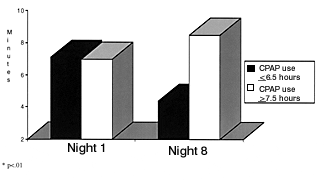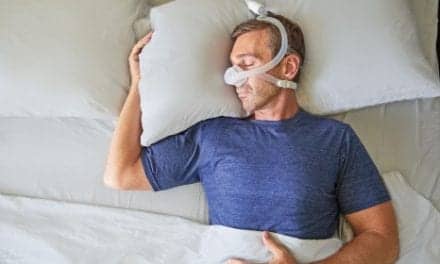Optimal management of RLS and PLMD depends on accurate diagnosis, including identification of possible triggers and institution of the appropriate therapeutic modalities
Restless legs syndrome (RLS) and periodic limb movement disorder (PLMD) are primary sleep disorders that have gained considerable notoriety over the past several years. Although not as well recognized as obstructive sleep apnea (OSA), RLS and PLMD can cause significant morbidity and impair quality of life. In general, primary sleep disorders may delay sleep onset, cause multiple arousals and awakenings, and promote excessive daytime sleepiness (EDS) (Table 1). In elderly patients with primary sleep disorders, wandering behavior and confusional arousals may occur, particularly in patients with dementing disorders. Optimal management of primary sleep disorders is predicated on an understanding of underlying causes, accurate diagnosis, and the institution of appropriate treatment.
Table 1. General characteristics of primary sleep disorders.
Overview and Clinical Presentation
RLS is characterized by an intense discomfort, mostly in the legs, during the evening when at rest. It is an akathisia (a syndrome characterized by an inability to remain in a sitting posture, with motor restlessness and a feeling of muscular quivering), and is often described as a “creepy crawly sensation.” Patients with RLS note a strong urge to keep moving their legs or to get up and walk around to relieve the discomfort. RLS may significantly interfere with the onset of sleep.
PLMD may accompany RLS or occur independently. This idiopathic condition is characterized by episodes of stereotypic rhythmic movement, usually of the legs, although other muscle groups (including the arms) may be involved. The patient’s bed partner typically perceives these episodes as kicks that occur in cycles of 20 to 40 seconds. Hundreds of limb movements may occur during a single night, but most of the time they do not awaken the affected person. They may, however, produce many brief arousals that disrupt sleep and decrease the amount of time spent in the deeper stages of sleep. The delayed sleep onset related to RLS and the sleep disruption from PLMD may cause EDS.
Prevalence
Numerous cross-sectional studies were performed recently across Europe in order to document the prevalence of RLS and PLMD in the general population.1 A total of nearly 19,000 subjects aged 15 to 100 years old underwent telephone interviews during which they answered specific questions. The prevalence of PLMD was 3.9%, and that of RLS was 5.5%. RLS and PLMD were found to occur more frequently in women than in men. The prevalence of RLS increased significantly with age. In multivariate models, factors associated with both disorders included being female; the presence of musculoskeletal disease, heart disease, OSA, and/or cataplexy; performing physical activities close to bedtime; and the presence of a mental disorder. Factors specific to PLMD included being a shift or night worker, snoring, daily coffee intake, use of hypnotics, and stress. Factors solely associated with RLS were advanced age, obesity, hypertension, loud snoring, drinking three or more alcoholic beverages per day, smoking more than 20 cigarettes per day, and use of selective serotonin reuptake inhibitors (SSRIs). The investigators concluded that PLMD and RLS are prevalent in the general population, and that both conditions are associated with several physical and mental disorders and may negatively impact sleep.
Table 2. Criteria for the diagnosis of restless legs syndrome.2
Diagnosis
RLS is primarily a clinical diagnosis. The accurate diagnosis of RLS and PLMD requires a thorough history, physical examination, and polysomnographic tests. Diagnostic criteria for RLS are listed in Table 2. Not all of the criteria need to be present in order to establish a diagnosis of RLS. PLMD may be suspected based on information obtained from a bed partner. If necessary, the diagnosis can be confirmed by electromyography of limb-muscle activity during nighttime monitoring in a sleep laboratory.2
Pathogenesis
There are no known causes of RLS. Some investigators believe that RLS may be due to several overlapping factors rather than one root cause. For example, a combination of genetic factors and secondary disorders (iron or vitamin deficiency) may make certain persons more prone to RLS than others.3 Caf-feine and alcohol ingestion can aggravate and in-crease the frequency of RLS symptoms.4 Possible causes of RLS and PLMD are listed in Table 3.

Like RLS, PLMD has no known causes. PLMD occurs only during sleep and involves unilateral or bilateral movements of limb muscles. The condition may be metabolic, vascular, or neurologic in origin. In addition to occurring commonly in patients with RLS, PLMD may occur in persons with OSA.5
The symptoms of RLS and PLMD may be triggered by reduced or prolonged limb immobility, such as might occur when sitting in a movie theater or airplane seat. In persons with RLS, symptoms are prevalent at night, and the discomfort usually arises shortly after periods of low activity and calm. The symptoms are most prominent at bedtime, coinciding or occurring shortly after lying down for sleep.
Management
Many persons with RLS and/or PLMD endure the symptoms for years before seeking medical care, by which time they are in their 50s or 60s. Perhaps for this reason RLS and PLMD are associated primarily with geriatric patients; however, these primary sleep disorders can occur at any age.
Treatment should begin by examining the patient’s lifestyle and looking for opportunities to initiate lifestyle modification, particularly with regard to substances known to exacerbate symptoms (caffeine and alcohol).6 Because sleep loss can worsen symptoms, attention should be given to optimizing sleep habits.
For patients in whom changes in diet, drinking patterns, and sleep habits fail to reduce the symptoms of RLS and PLMD, drug therapy is indicated. There are four general classes of drugs used to treat RLS (and associated PLMD) including dopaminergic agents, benzodiazepines, opioids, and anticonvulsants. Use of any agent should be viewed as a therapeutic trial; if symptom resolution does not occur within approximately 1 month, then switching to another class of agents is a good idea.6
Dopaminergic Drugs
Dopaminergic drugs can be effective in subduing RLS and PLMD symptoms, including reducing nighttime leg movements. There are reports of remarkably good short-term treatment results with levodopa,7,8 now given as sustained-release carbidopa/levodopa. Most patients with RLS, however, who take carbidopa/levodopa will develop augmentation (the relief of symptoms at night but the development of symptoms earlier in the day than normal). Increasing the dose may worsen the symptoms. Prolonged carbidopa/levodopa use (beyond 5 years) should be avoided because of the increased risk of side effects and the theoretical potential for damage to dopaminergic neurons.
The dopaminergic agonists pergolide, ropinirole, pramipexole, and bromocriptine mesylate have been shown to help relieve RLS symptoms.9 One drawback with dopaminergic agonists is that RLS symptoms tend to recur late at night. In some patients, dopaminergic potency may gradually decline, or it may be counterproductive on first use.
All dopaminergic agonists should be started at low doses and titrated upward. Some patients, particularly those in whom pain is a significant factor, may be resistant to therapy with dopaminergic drugs.
Benzodiazepines
Although benzodiazepines do not fully suppress RLS sensations or leg movements, they do allow patients to improve the quality of sleep.10-12 Some persons with RLS who use benzodiazepines may experience daytime drowsiness. Benzodiazepines are contraindicated in persons with OSA. The most frequently used benzodiazepine for the treatment of RLS symptoms is clonazepam. Diazepam has also been used for several decades to manage the symptoms of RLS.
Opioids
Opioid medications are prescribed by many physicians who treat RLS extensively.13 The pain-killing, relaxation-inducing qualities of opioids can help patients who experience moderate-to-severe RLS symptoms.
Two double-blind, randomized trials used crossover methodologies to evaluate the effectiveness of oxycodone and propoxyphene in improving the symptoms of RLS.7,14 Outcome measures included subjective ratings of RLS symptoms and polysomnographic analysis. Oxycodone at a mean daily dose of 15.9 mg both improved subjective ratings and decreased PLMD,14 with evidence for decreased arousals and improved sleep efficiency. Propoxyphene at a daily dose of 200 mg significantly decreased PLMD as assessed by one rating scale but not another, and provided little subjective benefit.7 In both studies, opioids were safe and well tolerated. The results of these well-designed studies suggest that oxycodone provides better relief of RLS symptoms than does propoxyphene.
The results of these double-blind, randomized trials are consistent with those of earlier open-label trials15,16 and case report series17,18 that provided preliminary evidence of the efficacy of opioids in patients with RLS. Long-term benefit for RLS with opioids has been reported with little evidence for tolerance or addiction.16,19
Anticonvulsants
The effectiveness of anticonvulsants for the management of RLS and PLMD appears to stem from their ability to decrease the sensory disturbances (“creepy” and “crawly” sensations) that are common after reduced limb mobility or at night. Unfortunately, side effects are common with anticonvulsants and include dizziness, sleepiness, fatigue, increased appetite, and unsteadiness.
Two anticonvulsants—carbamazepine and gabapentin—have shown promise in clinical trials for the treatment of RLS.20,21
Conclusion
The consequences of RLS and PLMD can be significant for those affected as well as bed partners and family members. Although many patients try to self-manage their symptoms, most will eventually seek treatment if symptoms are unrelenting and/or progressive. Optimal management depends on accurate diagnosis, which includes identification of possible triggers, and institution of the appropriate therapeutic modalities.
John D. Zoidis, MD, is a contributing writer for Sleep Review.
References
1. Ohayon MM, Roth T. Prevalence of restless legs syndrome and periodic limb movement disorder in the general population. J Psychosom Res. 2002;53:547-554.
2. Walters AS. Toward a better definition of the restless legs syndrome. The International Restless Legs Syndrome Study Group. Mov Disord. 1995;10:634-642.
3. Ondo W, Jankovic J. Restless legs syndrome: clinicoetiologic correlates. Neurology. 1996;47:1435-1441.
4. Rothdach AJ, Trenkwalder C, Haberstock J, Keil U, Berger K. Prevalence and risk factors of RLS in an elderly population: the MEMO study. Neurology. 2000;54:1064-1068.
5. Parker KP, Rye DB. Restless legs syndrome and periodic limb movement disorder. Nurs Clin North Am. 2002;37:655-673.
6. Chesson AL Jr, Wise M, Davila D, et al. Practice parameters for the treatment of restless legs syndrome and periodic limb movement disorder. An American Academy of Sleep Medicine Report. Standards of Practice Committee of the American Academy of Sleep Medicine. Sleep. 1999;22:961-968.
7. Kaplan PW, Allen RP, Buchholz DW, Walters JK. A double-blind, placebo-controlled study of the treatment of periodic limb movements in sleep using carbidopa/levodopa and propoxyphene. Sleep. 1993;16:717-723.
8. Becker PM, Jamieson AO, Brown WD. Dopaminergic agents in restless legs syndrome and periodic limb movements of sleep: response and complications of extended treatment in 49 cases. Sleep. 1993;16:713-716.
9. Paulson GW. Restless leg syndrome. How to provide symptom relief with drug and nondrug therapies. Geriatrics. 2000;55:35-36, 43-44, 47-48.
10. Boghen D, Lamothe L, Elie R, Godbout R, Montplaisir J. The treatment of the restless leg syndrome with clonazepam: a prospective controlled study. Can J Neurol Sci. 1986;13:245-247.
11. Montagna P, Sassoli de Bianchi L, Zucconi M, Cirignotta F, Lugaresi E. Clonazepam and vibration in restless leg syndrome. Acta Neurol Scand. 1984;69:428-430.
12. Schenck CH, Mahowald MW. Long-term, nightly benzodiazepine treatment of injurious parasomnias and other disorders of disrupted nocturnal sleep in 170 adults. Am J Med. 1996;100:333-337.
13. Hening W, Walters A, Chokroverty S. Current treatment of the restless leg syndrome: emphasis on dopaminergic agents, clonazepam, and opioids [abstract]. Sleep Res. 1995;24:246.
14. Walters AS, Wagner ML, Hening WA, et al. Successful treatment of the idiopathic restless legs syndrome in a randomized double-blind trial of oxycodone vs placebo. Sleep. 1993;16:327-332.
15. Sandyk R, Bamford CR, Gillman MA. Opiates in the restless legs syndrome. Int J Neurosci. 1987;36:99-104.
16. Hening WA, Walters A, Kavey N, Gidro-Frank S, Côté L, Fahn S. Dyskinesias while awake and periodic movements in sleep in restless legs syndrome: treatment with opioids. Neurology. 1986;36:1363-1366.
17. Fazzini E, Diaz R, Fahn S. Restless leg in Parkinson’s disease—clinical evidence for underactivity of catecholamine neurotransmission [abstract]. Ann Neurol. 1989;26:142.
18. Kavey N, Walters AS, Hening W, Gidro-Frank S. Opioid treatment of periodic movements in sleep in patients without restless legs. Neuropeptides. 1988;11:181-184.
19. Hening WA, Walters AS. Successful long-term therapy of the restless legs syndrome with opioid medications [abstract]. Sleep Res. 1989;18:241.
20. Zucconi M, Coccagna G, Petronelli R, Gerardi R, Mondini S, Cirignotta F. Nocturnal myoclonus in restless legs syndrome: effect of carbamazepine treatment. Funct Neurol. 1989;4:263-271.
21. Adlet CH. Treatment of restless legs syndrome with gabapentin. Clin Neuropharmacol. 1997;20:148-151.






